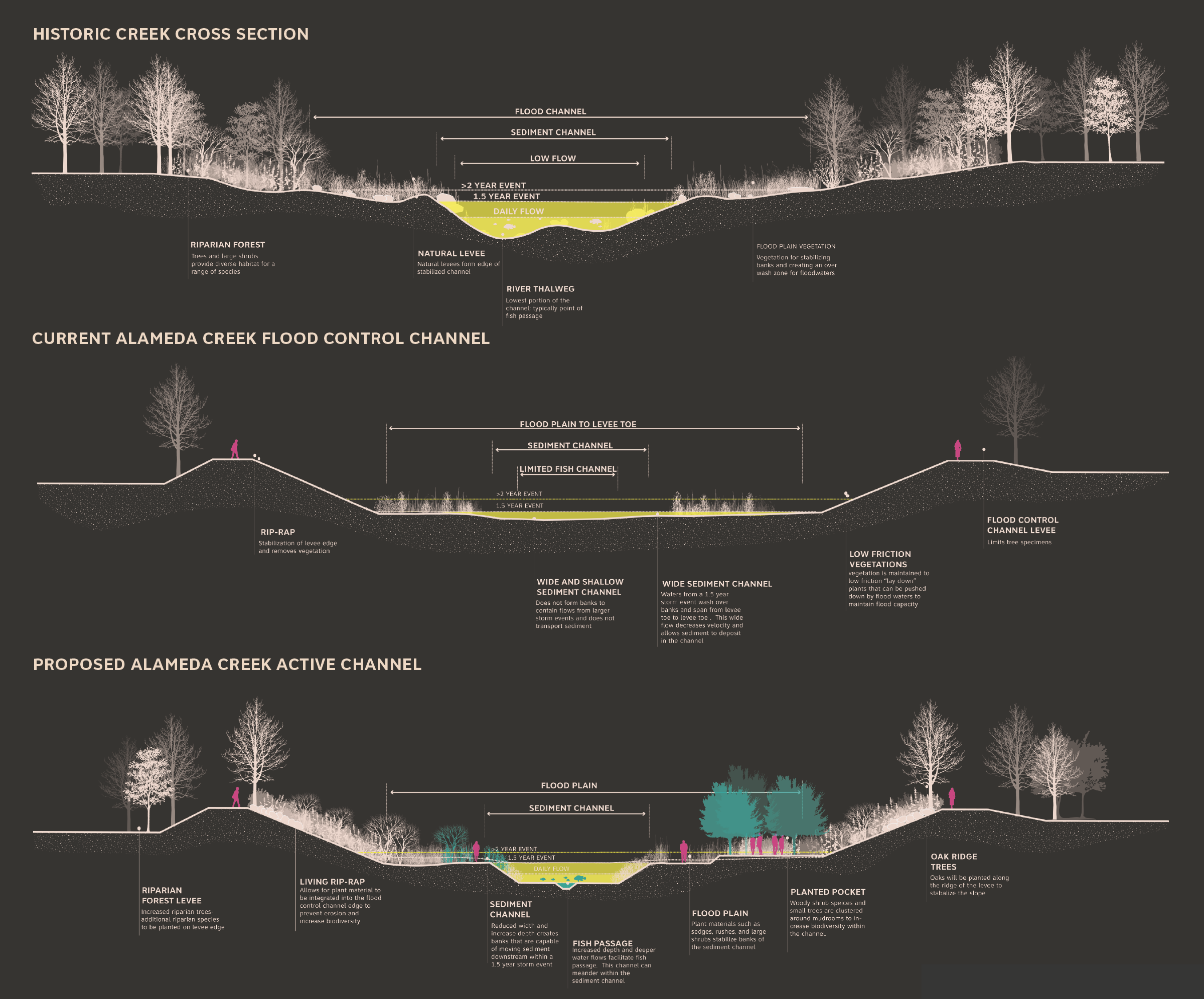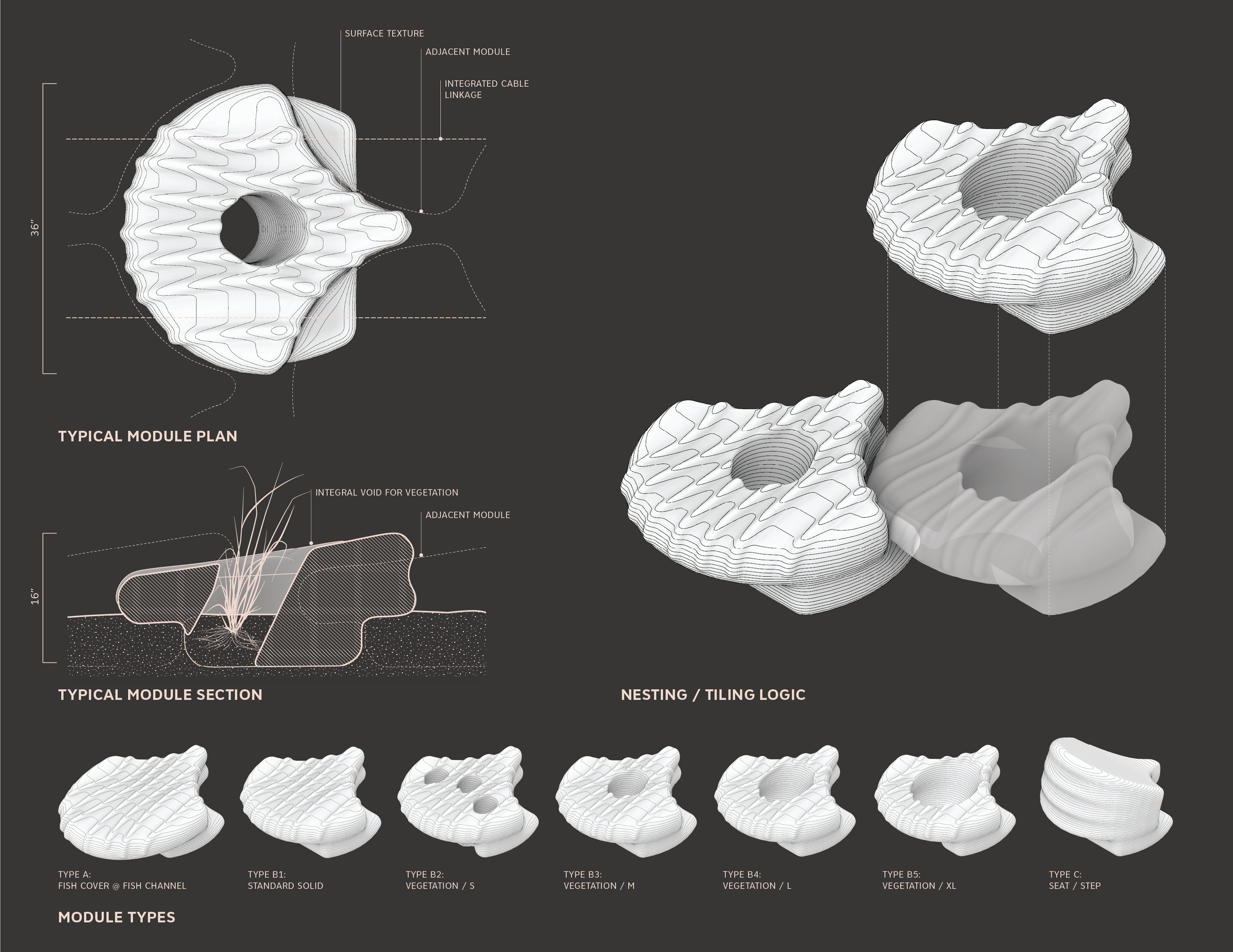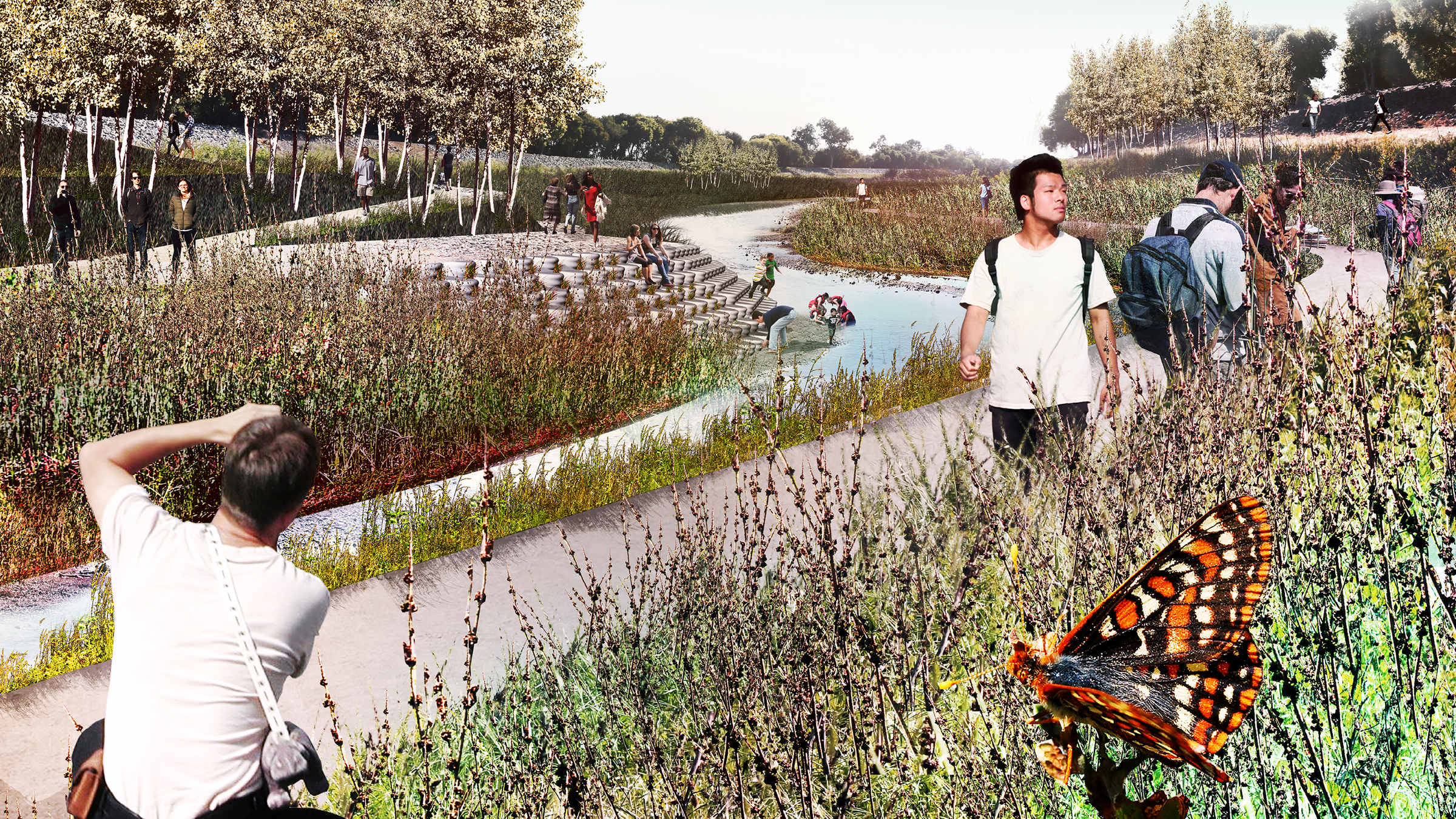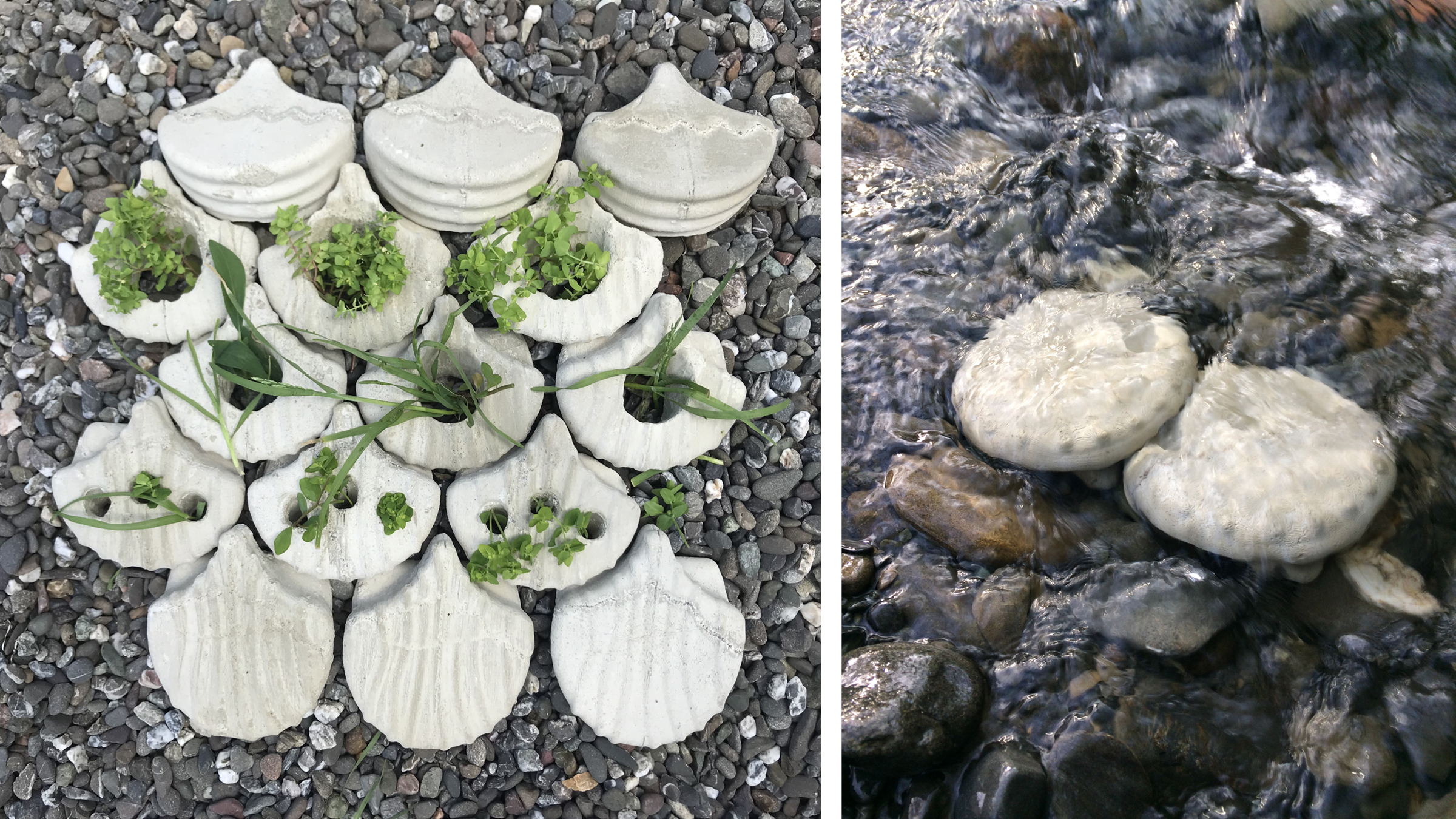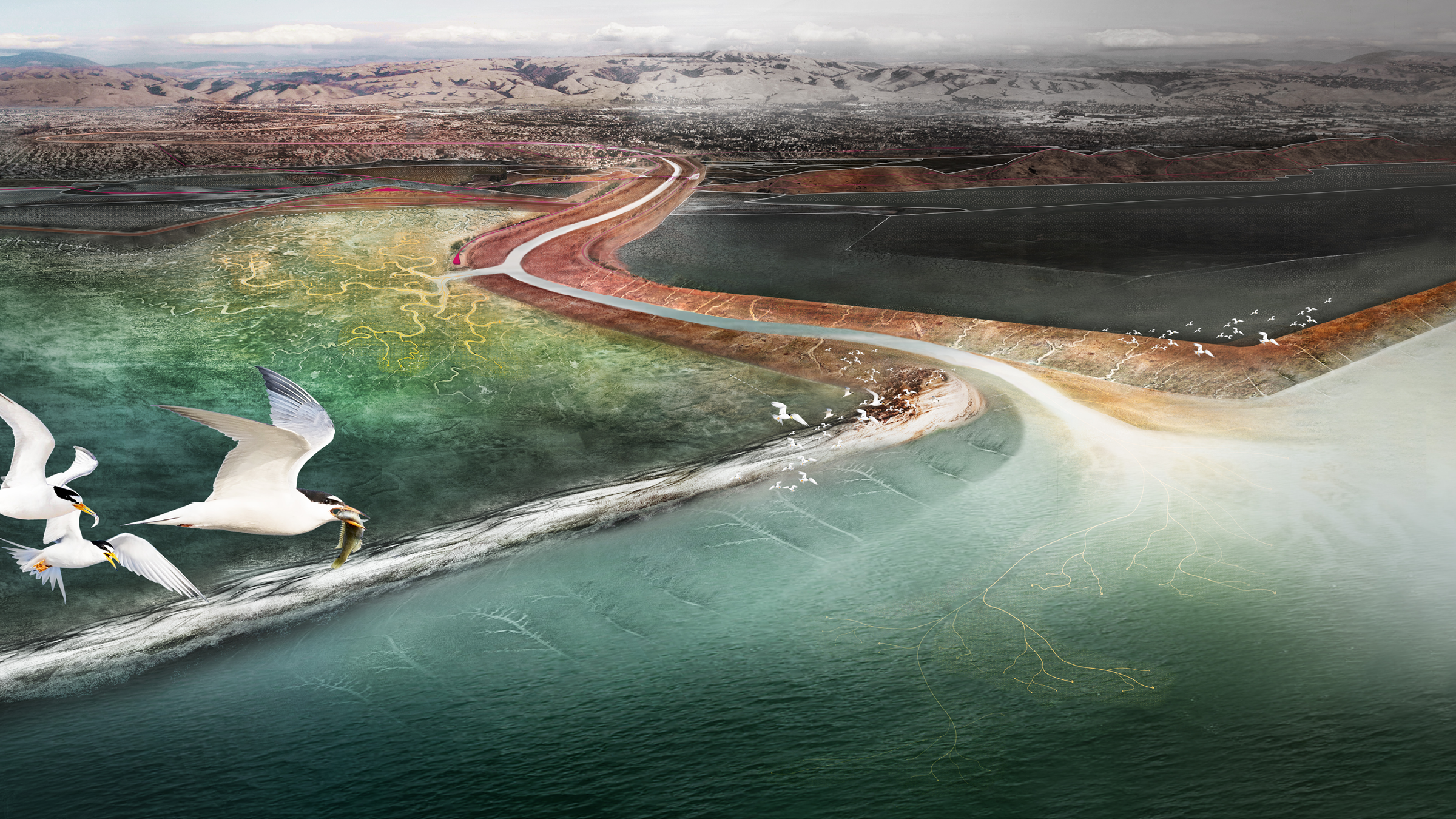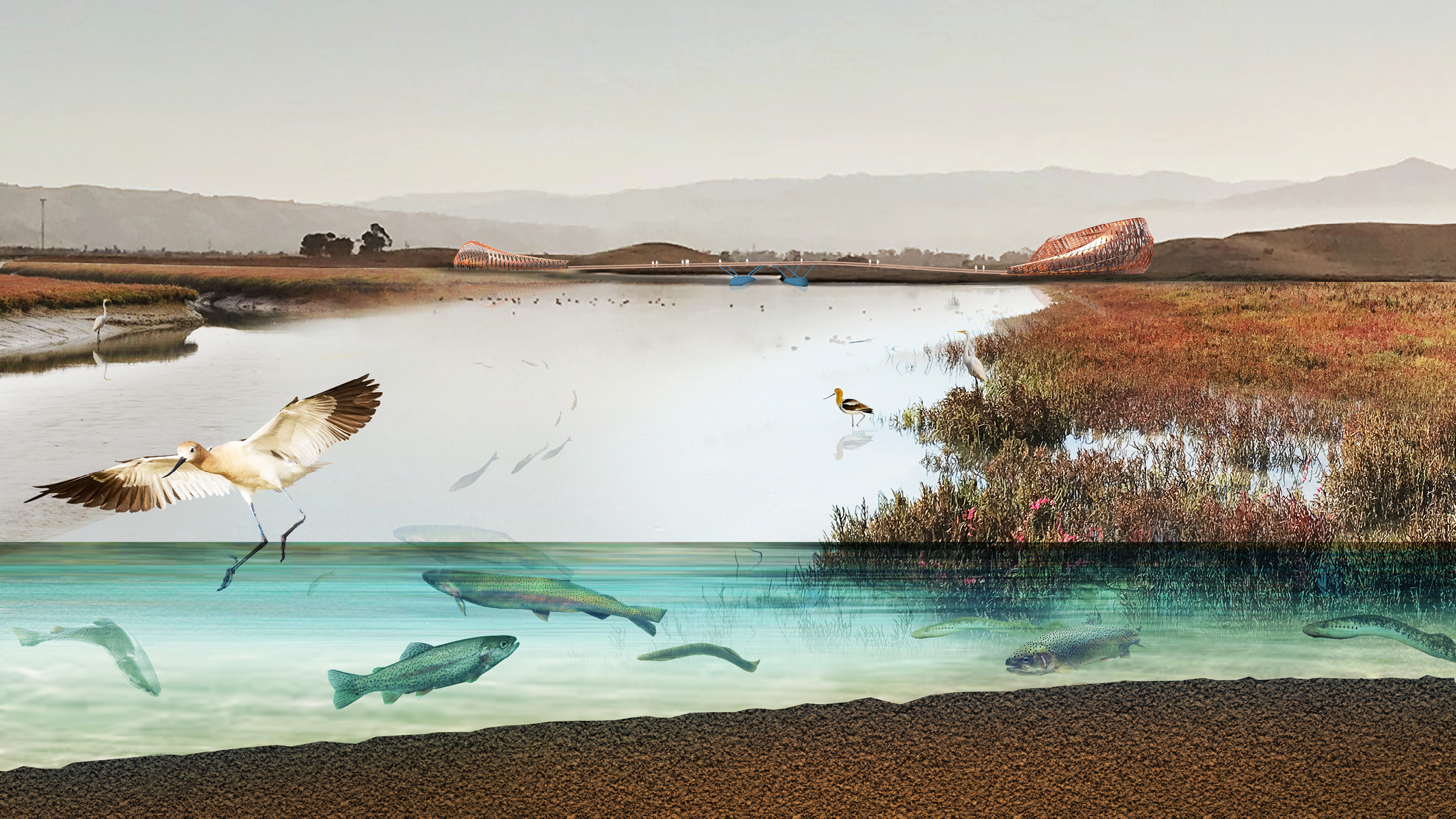Public Sediment for Alameda Creek
2018
Fremont and Union City, California
With CCA Architectural Ecologies Lab, SCAPE Landscape Architecture, Dredge Research Collaborative, UC Davis, Arcadis, Cy Keener, and TS Studio
Public Sediment was developed for the Resilient by Design Bay Area Challenge, a design competition that brings together local residents, public officials, and local, national and international experts to develop innovative solutions to the issues brought on by climate change in the Bay Area. Adam Marcus and colleagues at CCA's Architectural Ecologies Lab participated in a multi-disciplinary team on a year-long research and design collaboration focused on the Alameda Creek watershed in the East Bay.
Our team proposes that sea level rise adaptation must happen upstream. Public Sediment for Alameda Creek unlocks the creek to feed downstream baylands with sediment and sustain protective tidal ecosystems as the climate changes. Tidal ecosystems are protective infrastructure that cushion the urban edges of the San Francisco Bay. Yet the Bay Area’s tidal ecosystems—its marshes, mudflats—are at risk. These systems require sediment to grow vertically in response to sea level rise – without sediment, our baylands will drown. Low sediment supply and bayland drowning represents a slow but devastating scale of loss that threatens ecosystems, recreational landscapes, and places hundreds of thousands of residents and the region’s critical drinking water, energy, and transportation systems at risk. To creatively adapt to this challenge, our team has focused on sediment, the building block of resilience in the Bay. Our team proposes to actively intervene in this ecological transformation by Designing with Mud and Making Sediment Public.
Public Sediment for Alameda Creek is a proposal to address the challenge of sediment scarcity along the vulnerable urban edges of Fremont, Union City, and Newark. To bring sediment to the baylands, we look upstream to Alameda Creek, the largest local tributary that feeds the Bay. Our proposal aims to redesign this waterbody to create functional systems that sustainably transport sediment, engage people, and provide habitat for anadromous fish. Our proposal moves beyond the tidal edge to span four geographies (uplands, creek, baylands, and bay).
We propose to Unlock Alameda Creek and link the creek with the baylands. The proposal provides a sustainable supply of sediment to baylands for sea level rise adaptation, reconnects migratory fish with their historic spawning grounds, and introduces a network of community spaces that reclaim the creek as a place for people, building an ethos and awareness around our public sediment resources.
The Architectural Ecologies Lab team led the development of a central component of the proposal, the Living Levee. The Living Levee is a multibenefit strategy for revetment design that integrates ecological principles within an interlocking concrete module that helps limit erosion and support the surrounding ecosystem. Holes of variable size provide spaces for vegetation to grow and establish root structures in the soil, while also providing cover for fish along the channel edge and variable, multiscalar habitats for animals and humans that enhance biodiversity and support the local food web.
Honor Award, American Society of Landscape Architects, National, 2019
Honor Award, American Society of Landscape Architects, New York Chapter, 2019
Urban Design Merit Award, AIA California Council, 2018
Best of Design Award for Analog Representation, The Architect’s Newspaper, 2018
Selected for the Resilient by Design Bay Area Challenge, 2017
Project Credits:
CCA Architectural Ecologies Lab: Adam Marcus, Margaret Ikeda, Evan Jones, Georine Pierre, Carlos Sabogal
SCAPE Landscape Architecture (team lead)
Arcadis
The Dredge Research Collaborative
TS Studio
UC Davis Departments of Human Ecology and Design
UC Davis Center for Watershed Sciences
Cy Keener



